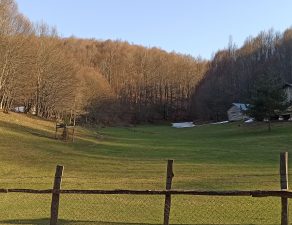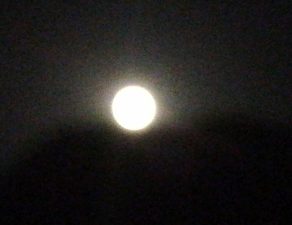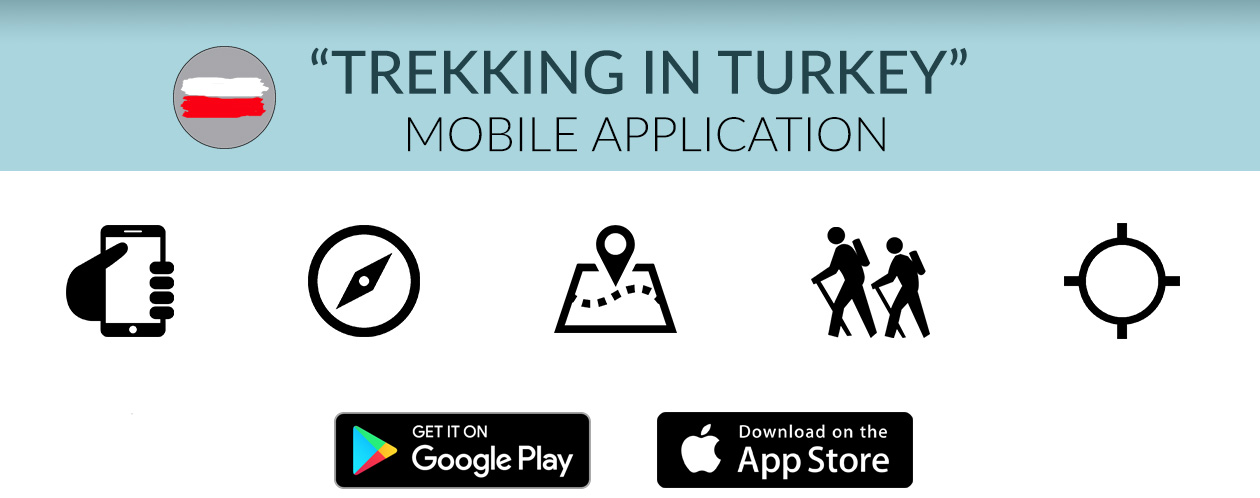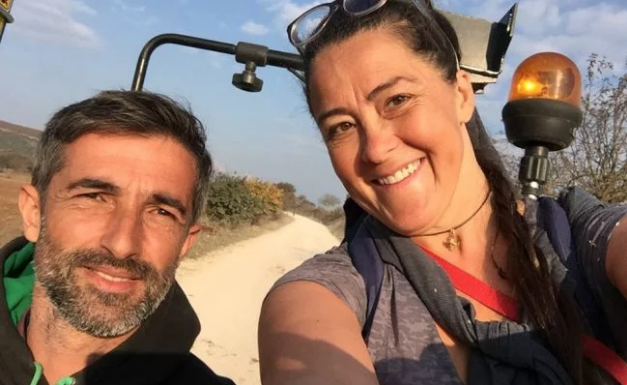Somebody who comes to a Turkish holiday resort does not have to stay there. Turn around and walk on Roman cobble stones to the mountains. Up there, village people will prepare your food from their own garden and you can sleep in a former school-room.
SLEEP AT SCHOOL
Yes, really at this table the village children learned reading and writing. Now a Turkish breakfast is served here with hot tea in fat-bellied teaglasses. Through the windows the morning light shines on a map on the wall: Europe on the left and on the right the Middle East. “Eat, Eat,” says the caretaker Ramazan Aslan, who once was a pupil here himself. OK, maybe not the best, but he is now one of a few people in the mountain village of Sağrak who has a job. We eat tomatoes, paprika, white cheese, butter, honeycomb, tahin and rose-marmelade, with thin bread that is folded like a teatowel. Aslan’s wife reacts in astonishment when we ask what of this she made herself. Everything of course; there is no shop in the village. Also no school children anymore.
The pink painted village school has already been already closed for 10 years but, as caretaker of the famous Adada ruins, Aslan discovered that the tourists were looking for a place to sleep in his village. And also for a meal. So he called the Ministry of Education, which gave him a rental contract under the condition that he would not change anything and that the building could be returned immediately, if necessary. Therefore you sleep on a simple mattress next to a wood-stove. The toilet is one on which you have to squat and next to it is a bucket with water. The shower area is a bit run down with a hot water heater on the wall. And still we have never slept better. After a rural meal at the neighbours, you walk under the stars towards the school, throw some wood on the stove and recall that you were on a tourist charterflight to Antalya that morning.
Kate Clow, who discovered the Turkish hinterland some 20 years ago, explains that everywhere in Turkey abandoned village schools can be found. With her society in Antalya, this belligerent 60ish lady tries to protect the cultural inheritance and bring some new life to the very poor villages, in spite of the “dead hand of bureaucracy”. The first long distance trail “The Lycian Way” was sort of illegally made at first, the second one : the St Paul’s Trail similarly; the school of Sagrak is on this trail. “We are busy with 3 other schools at the moment”. Since then the Cultural Routes Society with Kate Clow as chairman has made 19 more hiking-trails and put up signs for these; from rough mountain-paths near Armenia to gently sloping coastal tracks along the Aegean Sea.
For example, St Pauls Trail. Fly to Antalya with a charter-flight for a few euros, forget about all the all-inclusive resorts and take a minibus or cab to the mountains. Wow, you will think : it looks like Wyoming over here. But in Wyoming there are no 2000 years old, ancient Roman paths, that meander through the landscape with enormous flat stones, like floating masses of ice. “Still Roman roads are disappearing under concrete and dams” Kate Clow says at her house, where volunteers are walking in and out. She is nearly all the time busy with negotations with public workers and politicians. “They use the festive opening of an old village school as a way to gain votes from the village people”. Clow tries to make her routes more suitable for normal tourists, families with children and pilgrims. “These people need places to sleep and fresh food. Not everybody wants to take his tent along”. And on top of that : a bed and breakfast makes an opportunity for work in the villages.
The Roman road meanders up to the ruins of Adada. As if such is completely normal, we find the remains of ancient temples, half a house and a theatre with rows of marble benches. Only some cows and goats are feeding between fallen pillars. In another place along St Paul’s Trail we have to remove our shoes, roll our trouser-legs up and wade through an icy-cold river filled with stones – auch, ow – to the other side. In a narrow gap, high in a cliff is an antique sarcophaghus, with pillars and animal figures, carved in the rocks. It is a very normal thing to see for the people over here. On a square near the river, a group of complaining men show us a run-down building, once a school. Windows and a part of the roof are broken, and inside cupboards and tables upside-down. On the floor are schoolbooks, colouring pages and a forgotten school-uniform. “A perfect place for tourists”, says the muhtar (village elder), who is the only one who has no holes in his clothes. “For 2 years I have been busy with this, but the Ministry doesn’t give permission. Maybe we will need the building, they say. An incredible story, so for now tourists stay away.”
White Turks from Istanbul like to experience village-life Elsewhere along the trail, hiking-guide Erdinç Barca, who is one of the initiators of St Pauls Trail, is building 10 rooms with bathrooms near his farm. His young wife Emine serves dishes from their own garden and invites guests to remove the cumbersome hiking-shoes and to come inside for a cup of tea. Sitting on thick carpets near a wood-stove, you look at the Turkish evening news and you help daughters Elif and Buse with their English homework. In short a cosy evening with a Turkish family.
“Unfortunately most of the tourists do not stay overnight in the Taurus Mountains,” Erdinç says. “They book a busride in Antalya, stop at the ruins of Aspendos or Selge and go rafting in a canyon at the bottom of the hills”. Approximately 1000 people a year are walking on the St Paul Trail. But during the last few years, Turkish tourists can also be seen on the Roman road. Erdinç : “White Turks, mostly highly educated people from Istanbul or Izmir, like to experience the simple village-life and taste our organic food”.
There are thousands of antique places like Adada in Turkey
Opposite the mosque of Sagrak 3 old men are sitting by a wood-stove. “A good idea to use the school for tourists”, an old man says. Since the big agricultural companies have taken away all the buyers, the village people here grow only for their own table. Before 80 childen were living here, but now there is only Furkan, who has to go to school by bus. “But things may change”, a smoking grandfather suggests, “when the officials one day start to dig at the ruins of Adada”. A 89-year old man: “We used to dig ourselves overthere, but that is not allowed anymore.” In Turkey, you can find thousands of places like Adada, so these men may never see this happening. A white minibus is bumping on the road next to us and stops near the pink school; a boy in school-uniform disembarks. This has to be Furkan, the last mountain-child. The 10-year old boy puts his backpack on and looks astonished at the foreigners that wave enthousiastically at him. In front of the gate of a farm his mother is awaiting him, in her flowery apron. “I like to go to school”, Furkan says. “All my friends are there. Here nothing is to be done.”. Will he stay to live in Sagrak? He does not know yet. His mother shakes her head and tells with a soft voice “No, he will not stay here”.
(Noel van BEMMEL & Ciğdem Yüksel translated by Lenny Dadak).
Noel & Ciğdem advices
- CORENDON flies from March on every day from Amsterdam to Antalya and a couple of days per week from Maastricht, Eindhoven, Rotterdam and Groningen. 158Euro www.corendon.nl
- On the website of Kate Clow you can find turkish hiking trails and guide-books. You may also write or mail her society for advice. www.cultureroutesinturkey.com
- You can sleep with Erdinç Barca and his family +902427711038. All guides speak English.
- General information: www.welkominturkije.nl









1 Comment
Benoit Hanquet
November 16, 2016
Dear friends, I’ve tried to buy 2 books (St Nicolas trail and the Phrygian trail from your site but unfortunately it didn’t work. How could I proceed?
Write a comment: